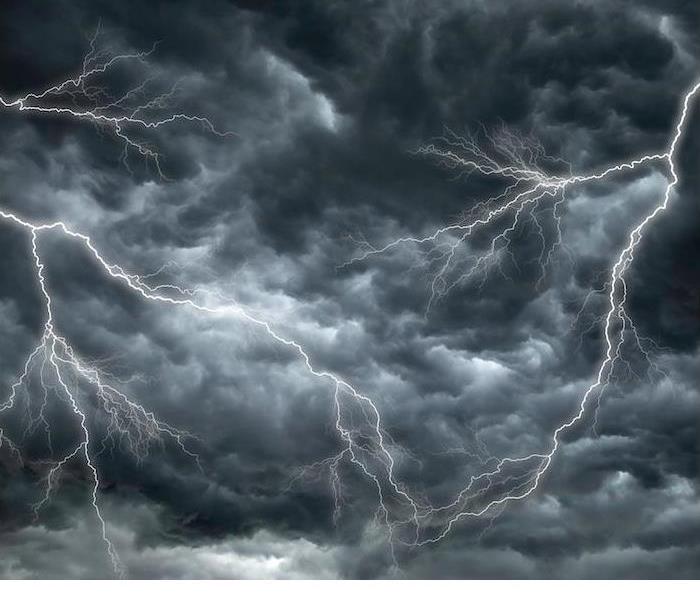What Can Be Damaged by a Lightning Strike? | SERVPRO® of San Gabriel
9/10/2019 (Permalink)
A thunderstorm dispels electrical energy by casting lightning bolts, which are some of the most violent examples of a thunderstorm’s power.
By causing wiring damage, ruining electronics and causing structural damage, there are quite a few things that can be damaged in the event of a lightning strike. For homeowners, it is wise to make a point to understand how lightning happens and what it can damage in order to take action after a storm has passed.
Thunder and lightning are a direct result of an electrical charge within the weather front, something all thunderstorms contain. When some of this energy is expelled by the storm, we see that as a lightning bolt and hear the thunder that is a result of the waves it produces.
When this energy is dispelled, the bolt will either dart across the clouds or toward the ground, where it will often strike an object on its way. This is the reason that lightning can be so hazardous to homes because it will route through electrical wires and cause havoc.
After a lightning bolt strikes on or near your home, it is important to inspect the following, which are routine damages lightning causes:
1. Electrical wiring. Lightning bolts reach temperatures of around 500,000 degrees. They can not only ignite buildings on impact, but they can also damage the wiring as they travel toward the ground, increasing the likelihood of a future electrical fire. Local fire marshals or electricians can often perform tests to assess the damage.
2. Appliance function. The charge lightning transfers to a home’s wires is powerful enough to travel up power cords and ruin any electronic device that’s plugged into the wall without a surge protector. After a storm, check all the electronics in the house to see if they are operational.
3. Foundation and structure. Thunder is created by shock waves when lightning strikes, but these can also occur when lightning hits the ground. These waves have been known to crack foundations and explode chimneys, so survey your home thoroughly after a storm.
If your home has been affected by storm damages or lightning-related fires, give us a call today! We are experts in damage cleanup and can restore your damage quickly.





 24/7 Emergency Service
24/7 Emergency Service
